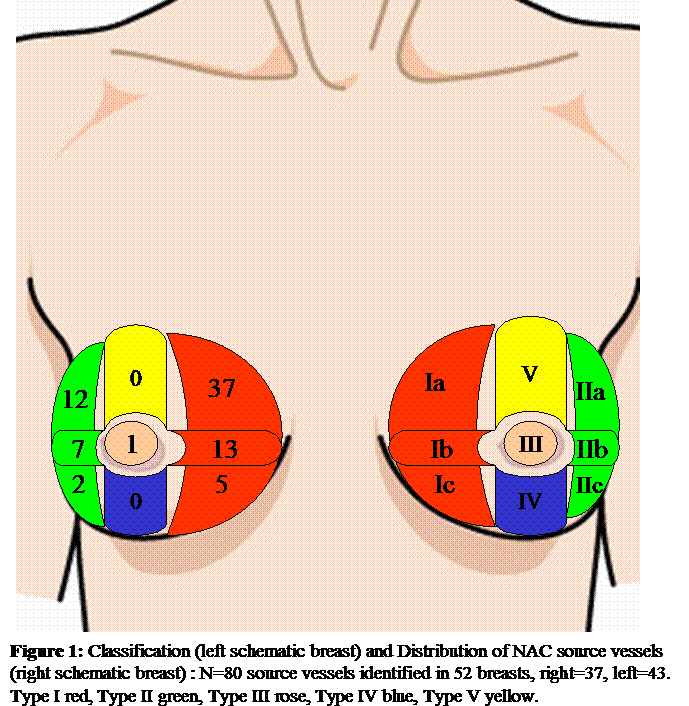Sunday, October 3, 2010 - 10:20 AM
17503
Breast MRI Helps Define the Blood Supply to the Nipple-Areolar Complex
Background: Pre-operative breast MRI may facilitate oncoplastic surgery by delineating the blood supply to the nipple-areola complex (NAC), thereby determining the vascular pedicle upon which to relocate the NAC. This study was designed to identify and classify the blood supply to the NAC using preoperative MRI.
Material and Methods: After IRB approval, breast MRIs of 26 patients who underwent imaging between June 2008 and May 2009 were reviewed. Inclusion criteria were a BIRADS 1 diagnosis. Patients with a history of breast cancer or previous breast surgery were excluded, while those with core biopsies were eligible. Bilateral breast MRIs were performed, and pre-and post-contrast contrast images were obtained. Determination of the dominant NAC blood supply was based upon timing of contrast filling.
The NAC blood supply was classified into 5 anatomic zones: medial (Type I), lateral (Type II), central (Type III), inferior (Type IV), and superior (Type V). Further sub-classification was performed based upon the source vessel (Figure 1).
Results: Patient age ranged from 33-70 years (mean 49). Indications for MRI included: family history of breast cancer (n=6), abnormal mammogram (n=7), breast cyst/nodule (n=12), dense/painful breasts (n=5), or history of ovarian cancer (n=1).
For the right breast, 16 patients had a medial zone only blood supply, 9 patients had multiple zone blood supplies, and 1 patient had a lateral zone only blood supply. Of the 9 patients with multiple zone blood supplies, 8 were an additional lateral source, and 1 was a central source. Blood vessel diameter ranged from 1-6 mm for the dominant vessel and 2-3 mm for the secondary blood supply. For the left breast, 12 patients had a medial zone only blood supply, 13 patients had multiple zone blood supplies, and 1 patient had a central zone only blood supply. Of the 13 patients with multiple zone blood supplies, 12 were an additional lateral source, and 1 was an additional central source. Blood vessel diameter ranged from 1-5 mm for the dominant vessel and 2-4 mm for the secondary blood supply. Blood vessel distribution is depicted in Figure 1 and Table 1.
Conclusion: This study utilized MRI images to define and classify the vascular anatomy of the NAC. Based upon this study, there was a predominance of superomedial source vessels for the NAC.
 | ||
| ||
See more of Breast Paper (5 mins)
Back to 2010am Complete Scientific Program

